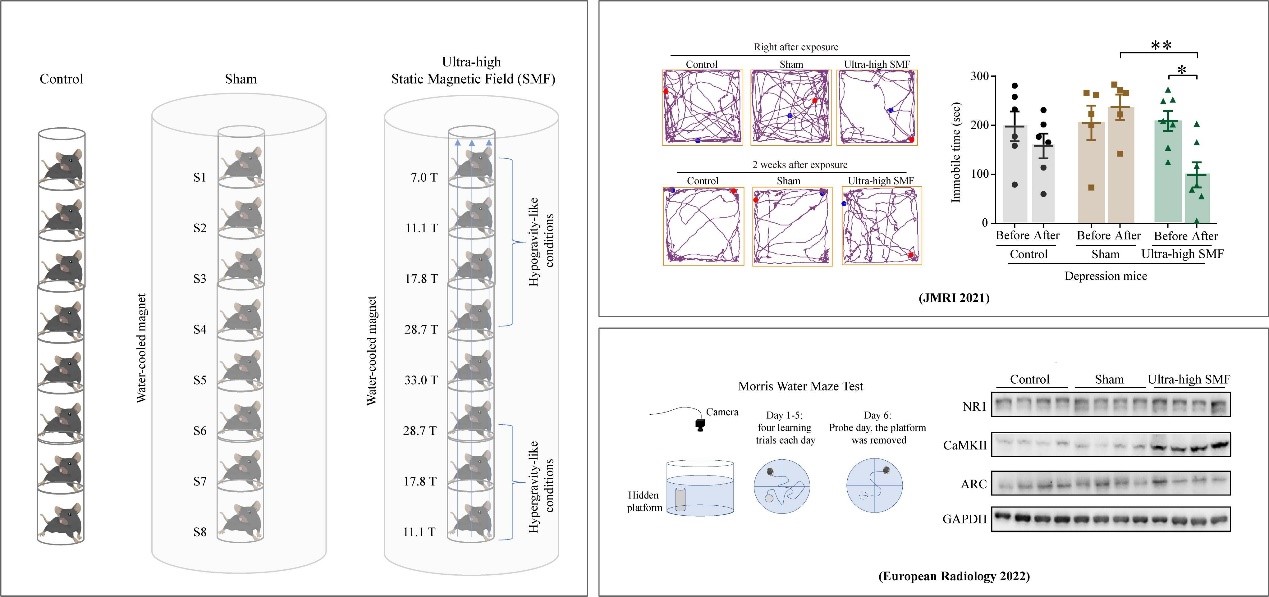
Prof. ZHANG Xin's team at the Hefei Institutes of Physical Science of the Chinese Academy of Sciences has recently conducted a series of studies to test the biosafety and neurobehavioral effects of 33.0 Tesla (T) high static magnetic field (SMF) using the self-designed biological research platform of Steady High Magnetic Field Facility (SHMFF).
They for the first time reported the biosafety of 30 T level SMF and the neurobehavioral effects of 20 T and 30 T level SMF on healthy mice in in the Journal of Magnetic Resonance Imaging and European Radiology.
In recent years, ultra-high field magnetic resonance imaging (MRI) has developed rapidly due to its significant advantage of high imaging resolution.
Based on the previous biosafety study of 3.5-23.0 T SMF, ZHANG Xin's group further increased the magnetic field intensity and shortened the exposure time. Healthy C57BL/6J mice were exposed to 7.0-33.0 T SMF for one hour.
After exposure, all mice were routinely fed for two months.
Meanwhile, behavioral tests showed that high SMF alleviated anxiety and improved social and spatial memory in mice within two months after exposure.
In addition,
ZHANG's group further found that 7 T SMF could effectively relieve symptoms of depressed mice.
This study was supported by the National Key Research & Development Program of Ministry of Science and Technology, the National Natural Science Foundation of China, the President's Fund of Hefei Institutes of Physical Science, etc.

Experiments carried out on SHMFF. (Image by LYU Yue)

86-10-68597521 (day)
86-10-68597289 (night)

52 Sanlihe Rd., Xicheng District,
Beijing, China (100864)

